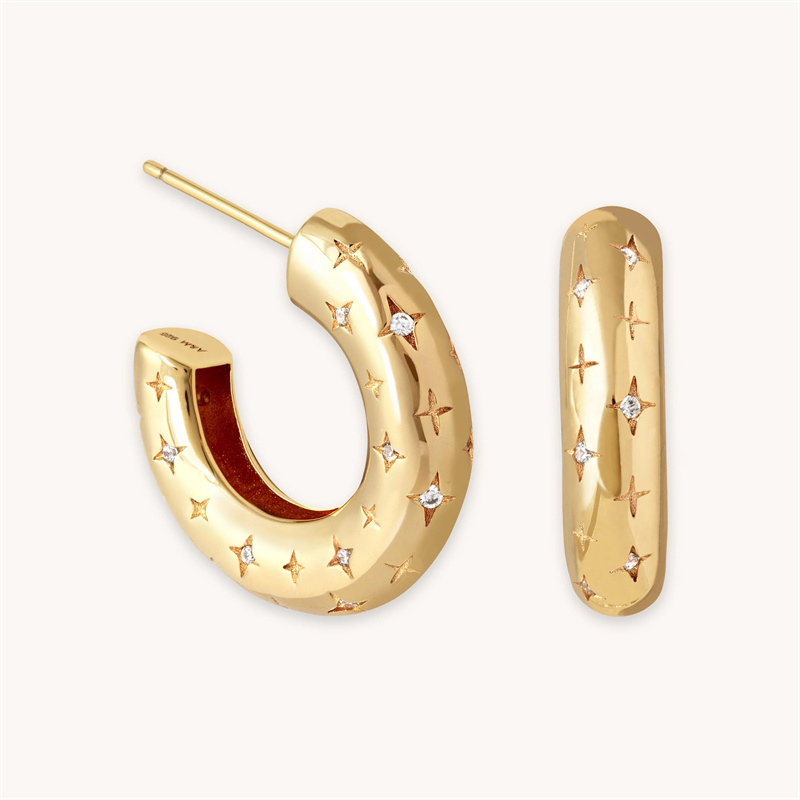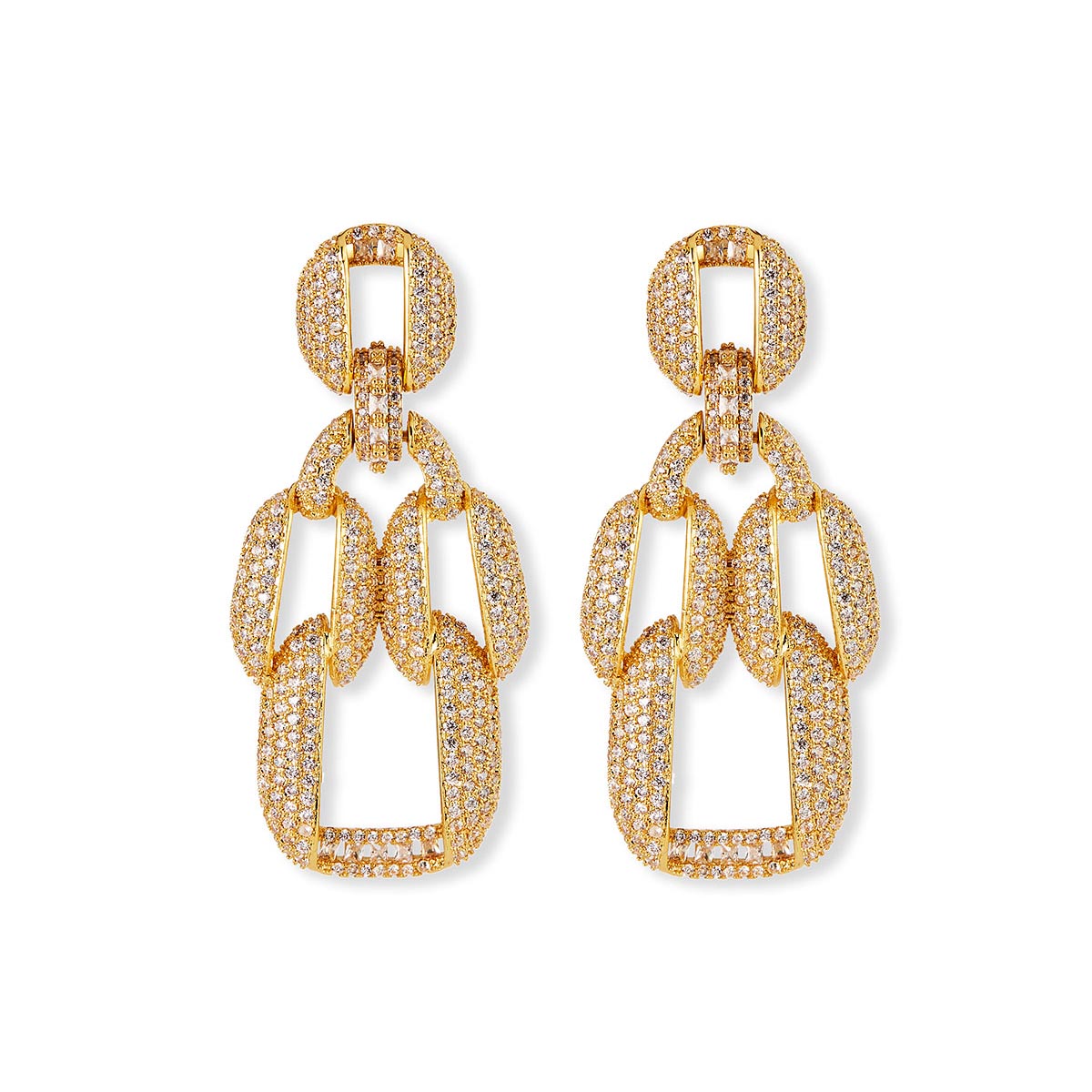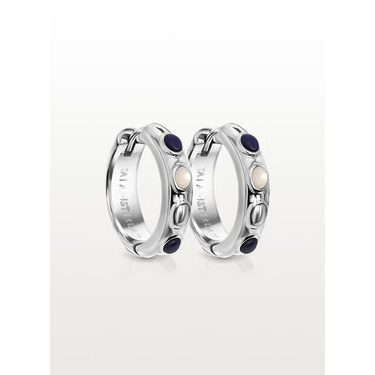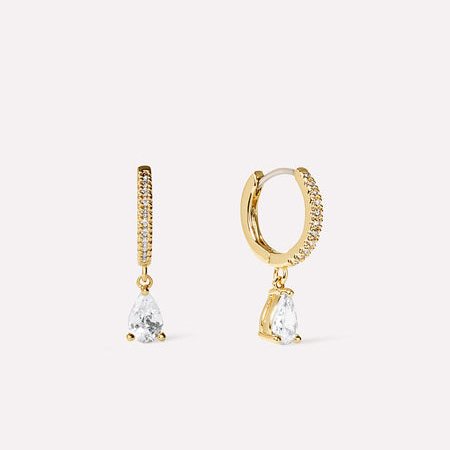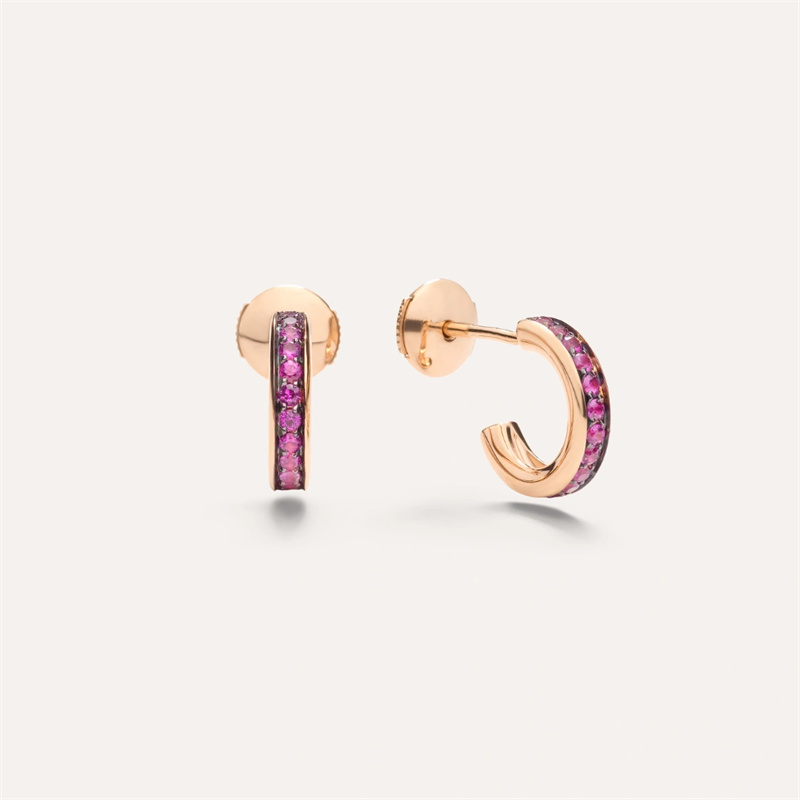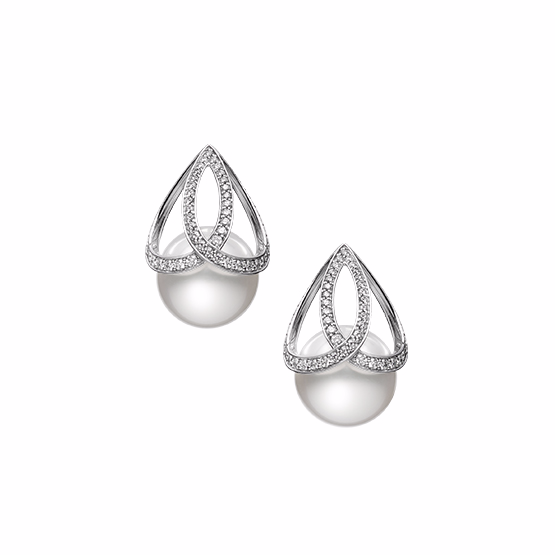OEM earrings on Polished silver or rhodium-plated silver (durable) at JINGYING
OEM earrings on Polished silver or rhodium-plated silver (durable) at JINGYING
LET’S GET STARTED : mo@kingjy.com
The Art of Duality: A Deep Dive into JINGYING’s OEM Gold Plated Earrings on Polished and Rhodium-Plated Silver
Introduction: The Allure of Contrast and Durability
In the ever-evolving landscape of fashion jewelry, the quest for pieces that embody the opulence of gold while ensuring longevity, affordability, and ethical production is paramount. This is where the sophisticated craftsmanship of Original Equipment Manufacturing (OEM) shines, and companies like JINGYING stand at the forefront. A particularly compelling category within their offerings is gold-plated earrings constructed upon a foundation of either polished silver or rhodium-plated silver. This combination represents a masterful fusion of aesthetic appeal and robust engineering, creating products that captivate consumers and brands alike.
This article delves deep into the world of JINGYING’s OEM services for these specific earrings. We will explore the fundamental materials—sterling silver, rhodium, and gold plating—unpacking their properties and why their combination is so effective. We will dissect the intricate manufacturing process, from design conceptualization to final quality control, highlighting JINGYING’s role as a expert partner. Furthermore, we will examine the immense market appeal and business advantages this product category offers, before concluding with a forward-looking perspective on its place in the future of jewelry.
Chapter 1: Deconstructing the Foundation – Polished Silver and Rhodium-Plated Silver
The base metal of any plated jewelry is its skeleton; it determines the piece’s structural integrity, weight, and, crucially, its interaction with the plating. JINGYING’s choice to use silver as a base is a strategic decision that elevates the product from mere fashion accessory to a near-fine jewelry experience.
1.1 Sterling Silver: The Classic Benchmark
JINGYING typically uses 925 sterling silver as its base material. This alloy consists of 92.5% pure silver and 7.5% other metals, usually copper. The reason for this alloy is simple: pure silver (999 fine) is too soft for durable jewelry that must withstand daily wear, clasping, and accidental impacts. The addition of copper provides the necessary hardness and resilience.
- Properties: Sterling silver offers excellent malleability and ductility, making it ideal for intricate designs. It is also highly hypoallergenic, making it suitable for a vast majority of wearers with sensitive ears. Its inherent value and prestige add a perceived quality to the finished product that base metals like brass or copper cannot match.
- The Polished Finish: A polished silver base is meticulously buffed to achieve a mirror-like, brilliant finish. This ultra-smooth surface is critical for the subsequent gold plating process. Any imperfection, scratch, or porosity on the silver base will be amplified under a thin layer of gold. A flawless polish ensures the gold plating appears vibrant, even, and deeply luminous. For certain designs, JINGYING might offer a combination where parts of the earring, such as the post or inner details, are left as polished silver, creating a two-tone effect that is both modern and classic.
1.2 Rhodium-Plated Silver: The Ultimate Shield
While polished silver is a superb foundation, it is not without its vulnerabilities. Sterling silver can tarnish over time when exposed to sulfur compounds in the air, moisture, and chemicals. This tarnish appears as a yellowish or blackish film. For a gold-plated piece, underlying tarnish can create a dull, mottled effect on the surface. This is where rhodium plating comes in as a game-changing intermediate layer.
- What is Rhodium? Rhodium is a platinum-group metal. It is one of the rarest and most valuable metals on earth, renowned for its exceptional reflective white shine and incredible hardness. It is highly resistant to tarnish, corrosion, and scratches.
- The Rhodium Barrier: By plating the polished silver base with a layer of rhodium before the gold plating, JINGYING engineers a formidable barrier. This process, often called “flashing,” serves multiple purposes:
- Prevents Tarnish Migration: The rhodium layer hermetically seals the silver, preventing any potential tarnish from forming on the base metal and affecting the top gold layer.
- Creates a Neutral Canvas: Rhodium provides a brilliantly white, hard surface. This neutral base prevents the slightly warm tone of the underlying silver from altering the true color of the gold plating. A yellow gold plate over rhodium will appear brighter and more authentic, while rose and white gold platings achieve their true hue with unparalleled accuracy.
- Enhances Durability: The exceptional hardness of rhodium adds a scratch-resistant sub-layer, significantly improving the overall durability of the earring and protecting it from minor abrasions during handling and wear.
The decision between a pure polished silver base or a rhodium-plated one depends on the desired price point, design aesthetic, and target market. However, for OEM clients seeking the most durable and high-quality product, the rhodium-plated silver base is unequivocally the superior choice.
Chapter 2: The Gleaming Veneer – The Science and Art of Gold Plating
The gold layer is the soul of the product—the visible element that defines its color, luxury, and initial appeal. Gold plating is not merely dipping; it is a precise electrochemical process.
2.1 The Electroplating Process
JINGYING’s plating process is a meticulous operation conducted in state-of-the-art facilities.
- Ultrasonic Cleaning: The silver components are first thoroughly cleaned in an ultrasonic bath to remove any oils, dust, or polishing compounds.
- Pre-Dip: The pieces are treated with specific solutions to activate the metal surface, ensuring optimal adhesion.
- The Electroplating Bath: The cleaned pieces are submerged in an electrolyte solution containing dissolved gold ions. They are connected to a cathode (negative charge), while an anode (positive charge) made of solid gold is also placed in the solution. When an electric current is applied, the gold ions are attracted to the negatively charged jewelry piece and bond to its surface at a molecular level.
- Rinsing and Drying: The newly plated pieces are rinsed in deionized water to remove any chemical residues and are then carefully dried.
2.2 Understanding Gold Plating Thickness: Microns Matter
The durability and longevity of the gold finish are directly proportional to its thickness, measured in microns (µm). JINGYING typically offers a range to suit different client needs:
- Standard Gold Plating (0.5 µm): A cost-effective option suitable for earrings that may be part of a fast-fashion collection or have a shorter intended lifespan.
- Heavy Gold Plating (1.0 – 2.5 µm): This is the industry standard for quality fashion jewelry. It offers excellent resistance to wear and can last for years with proper care. JINGYING likely specializes in this range for their core OEM products.
- Vermeil (2.5 µm+ on Sterling Silver): Gold vermeil (pronounced ver-may) is a regulated classification. It requires a minimum of 2.5 microns of gold plating over a sterling silver base. This is the premium option, offering longevity that closely rivals solid gold. For clients wanting to market a luxury product without the luxury price tag, vermeil is the gold standard, and JINGYING can expertly produce it.
2.3 Gold Karats and Colors
The karat of the gold used in plating determines its color and properties:
- Yellow Gold Plating: Created from 14k, 18k, or 22k gold alloys. Higher karats (22k) have a deeper, richer yellow but are slightly softer. 14k and 18k offer a perfect balance of color and durability.
- Rose Gold Plating: An alloy of gold, copper, and a small amount of silver. The higher copper content gives it its distinctive warm, pink hue. JINGYING can precisely control the alloy formula to achieve specific shades, from a subtle blush to a deep rose.
- White Gold Plating: Traditionally an alloy of gold with nickel or palladium. However, due to nickel allergies, the modern and hypoallergenic standard is to plate over the rhodium barrier with a palladium-based white gold or even to achieve the white gold look directly with the rhodium itself, though this is less common. The result is a cool, silvery-white appearance that mimics platinum.
Chapter 3: The JINGYING OEM Process: From Concept to Completion
OEM is more than just manufacturing; it is a partnership. JINGYING acts as an extension of their client’s team, transforming ideas into tangible, market-ready products.
3.1 Phase 1: Consultation and Design Development
The process begins with a deep-dive consultation. JINGYING’s experts work with the client to understand their brand identity, target audience, price point, and design vision. Clients can provide:
- Technical Drawings: Precise CAD (Computer-Aided Design) drawings.
- Inspiration Mood Boards: A collection of images, textures, and themes.
- Physical Samples: Existing pieces they want to replicate or modify.
JINGYING’s in-house design team can also assist in creating original designs, offering expert advice on what is technically feasible and most aesthetically pleasing for the materials chosen.
3.2 Phase 2: Prototyping and Sampling
Once the design is finalized, JINGYING creates a prototype. This is a critical step.
- 3D Printing/Wax Modeling: A physical model is created using 3D printing technology or traditional wax carving.
- Master Mold Creation: From this model, a master mold is made, which will be used for casting the silver bases.
- First Sample: The first sample is cast in silver, polished, and plated. This sample is sent to the client for thorough evaluation. The client assesses the design, weight, finish, color accuracy, and clasp mechanism. Feedback is given, and revisions are made until the sample is approved. This iterative process ensures complete client satisfaction before mass production begins.
3.3 Phase 3: Mass Production and Quality Control
After sample approval, mass production commences. This is where JINGYING’s expertise and scale become apparent.
- Casting: Silver is cast into the molds using the lost-wax casting method, creating the raw components of the earrings (e.g., fronts, backs, posts, hooks).
- Assembly and Soldering: Skilled artisans assemble the components. Any parts requiring joining are carefully soldered.
- Polishing: Each assembled piece undergoes meticulous polishing by hand and machine to achieve the specified finish.
- Plating: The pieces are meticulously plated according to the agreed-upon specifications (karat, color, thickness).
- Rigorous Quality Control (QC): QC is integrated into every single step. After plating, each earring is individually inspected for defects like plating inconsistencies, scratches, weak clasps, or structural flaws. This multi-layered QC process is what guarantees the “durable” claim.
3.4 Phase 4: Packaging and Logistics
JINGYING offers comprehensive packaging solutions. Earrings can be supplied on custom cards, in branded boxes, with anti-tarnish strips, and in polybags. They manage the entire logistics chain, ensuring timely and secure delivery to the client’s designated location anywhere in the world.
Chapter 4: Market Appeal and Business Advantages
The strategic combination of gold plating over polished/rhodium-plated silver offers compelling advantages for brands and retailers.
4.1 Consumer Appeal: The Perfect Value Proposition
For the modern consumer, this product category hits a sweet spot:
- Affordable Luxury: It offers the look and feel of solid gold at a fraction of the cost, making luxury and self-expression accessible.
- Hypoallergenic Properties: The silver and rhodium base, coupled with high-quality gold plating, makes these earrings safe for most consumers with metal sensitivities, a significant market concern.
- Durability and Trust: The “rhodium-plated silver” and “heavy gold plating” or “vermeil” descriptions signal a quality product that won’t tarnish or turn green after a few wears. This builds brand trust and encourages repeat purchases.
- Versatility: The range of available gold colors and styles—from minimalist studs to elaborate statement chandeliers—means there is a product for every taste and occasion.
4.2 Business Advantages for OEM Clients
For businesses partnering with JINGYING, the benefits are immense:
- Low Minimum Order Quantity (MOQ): Unlike dealing with solid gold, OEM for plated jewelry allows for lower MOQs, enabling smaller brands and startups to launch collections without a massive capital outlay.
- High Profit Margins: The cost of materials, while higher than base metal, is still manageable. The perceived value is high, allowing for healthy markup strategies.
- Speed to Market: JINGYING’s efficient OEM process and supply chain expertise allow clients to respond quickly to fashion trends.
- Brand Customization: Clients receive a product that is uniquely theirs, building their brand equity rather than selling generic, off-the-shelf wholesale items.
- Reduced Risk: With JINGYING handling the complex manufacturing, QC, and logistics, clients can focus their resources on design, marketing, and sales.
Chapter 5: Care, Maintenance, and The Future
5.1 Ensuring Longevity: Care Instructions
JINGYING would provide clients with care instructions to pass on to the end-consumer, further enhancing the product’s value:
- Last On, First Off: Apply cosmetics, perfumes, and hairsprays before putting on earrings.
- Avoid Moisture and Chemicals: Remove earrings before swimming, showering, or cleaning.
- Proper Storage: Store in a dry, airtight container, ideally with anti-tarnish strips.
- Gentle Cleaning: Clean with a soft, lint-free cloth. Avoid abrasive chemicals or polishes.
5.2 The Future: Sustainability and Innovation
The future of this sector is bright and evolving. A forward-thinking OEM partner like JINGYING is likely already exploring:
- Sustainable Practices: Implementing recycled silver and gold in their plating processes, reducing water usage in plating baths, and employing eco-friendly packaging.
- Advanced Plating Technologies: Exploring even more durable plating methods like PVD (Physical Vapor Deposition) coating, which can offer superior wear resistance.
- Traceability: Providing clients with information about the sourcing of their materials, appealing to the ethically-conscious consumer.
Conclusion: The Synthesis of Value and Craftsmanship
JINGYING’s OEM gold-plated earrings on polished or rhodium-plated silver represent a pinnacle of intelligent jewelry manufacturing. They are not simply products of convenience but are the result of a sophisticated understanding of materials science, electrochemical processes, and market desires. This combination delivers a trifecta of benefits: the timeless beauty of gold, the enduring strength and value of silver, and the cutting-edge protection of rhodium.
For brands, partnering with an OEM expert like JINGYING provides a turnkey solution to offer a premium, durable, and desirable product that builds brand loyalty and drives profitability. For the end-wearer, it offers a piece of accessible luxury that is beautiful, trustworthy, and made to last. In the delicate dance of fashion jewelry, this particular product line is a masterful performance, and JINGYING is poised to be a leading choreographer.
